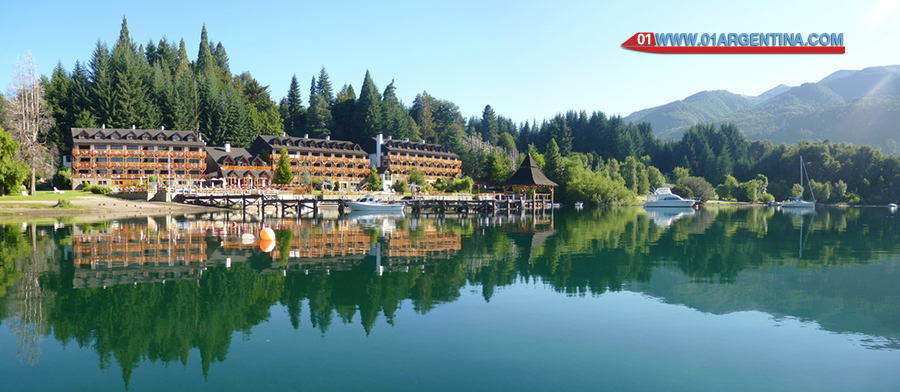
Images explored in the area of Lake Nahuel Huapi, famous for its intense blue mountains, forests and sites that look tale.
Nahuel Huapi Lake is the heart of a tourist area in southern Argentina (and north of Patagonia) in the provinces of Neuquen and Rio Negro. Most of the lake is in a national park, a protected area that includes islands, rivers and forests a short walk from cities like Bariloche and Villa La Angostura, some of the most recommended. The distance from this place to Buenos Aires is about 1,567 kilometers, about 17 hours of driving or a flight of 2 hours and 20 minutes.
Nahuel Huapi Lake
The Nahuel Huapi Lake is a lake of glacial origin of Patagonia Argentina. It is shared by the Argentine provinces of Neuquen (80%) and Rio Negro (20%), and mostly surrounded by the homonymous national park.
It has an area of 557 square kilometers and is situated at an altitude of about 700 meters. It is notable for its depth and its eight branches or arms: Campanario, Sadness, Blest, Machete, of the Corner, Last Esperanza and Huemul Angostura. It is related to other less extensive lakes, such as Gutiérrez (16.4 km²), Moreno (16.4 km²), Espejo and Correntoso (27 square kilometers). It feeds on thaws and is the source of the Limay River. Reaches maximum depth 464 m. It owns several islands, being the largest and most important for its tourism Victoria Island, 31 square kilometers.
His intense blue color, its islands and the surrounding landscape, making it one of the most attractive places in southern Argentina and a magnet for national and international tourism, cementing a strong population growth of its coastal cities, which it has created some problems of pollution of its waters.
The legend
Ancient Indian legends claimed that the Nahuel Huapi lodged a gigantic creature. He was known as “leather” for resemble a cow leather extended over the water, forming a dome light. The myth became popular since the 20s, when, from supposed sightings, Buenos Aires Zoo decided to organize a search that had international repercussions. Later sightings suggested the possibility to be some sort of sea serpent or even a plesiosaur, similar to Nessie, a course similar in nature in Scotland. Since the 80s the mythical creature known by the name of Nahuelito.
Myrtle forest
A forest of great trees orange rind (myrtle), an arm of the lake where rain down 4,000 millimeters per year (donce the forest looks like a jungle), a lake “mirror” in the environment, another lake of turquoise water, islands, inlets , rivers and pristine beaches. It is paradise Argentine Patagonian mountain near the city of Bariloche, missed on a visit to the country.
Los Arrayanes National Park is a nature reserve located in the department of Los Lagos Argentina Neuquen province; occupies the 1753 has Quetrihué peninsula on the northern shore of Lake Nahuel Huapi.
Since 1934 the territory is under protection of the National Parks Administration, forming to 1971 part of Nahuel Huapi National Park; on this date it was decided to give independent entity by the importance of the wooded formation that lodges in its southern end, composed exclusively of myrtles, a tree of the family Myrtaceae with bright golden crust and slow growth.
The park exhibits a sample of the Andean Patagonian forest ecoregion, in which the semi-deciduous species, interspersed with bogs whose extension grows in more southern latitudes predominate.
Climate, only slightly tempered by the lacustrine influence, is cold and humid, with intense and constant westerly winds; the valley in which it is located is of glacial origin, and to the west the Andes rises. The wettest season is winter; rainfall decreases moving away from the mountains, being on the peninsula of about 2000 mm annually.
The relatively small size of the park restricts the variety of species present; near the lake is the forest of southern myrtles, and next to it other evergreen species, especially coihue. Timberline includes also ñires, Guaitecas cypresses [citation], cypresses of the Cordillera, radales, huahuanes and species of lesser height as the patagua, notro or boldo. The underbrush is formed mainly by maqui, colihue introduced cane and bush rosehip.
The birdlife is rich, and includes both species of aquatic habit, like the imperial cormorant, which nests in the neighboring islands, and cauquén gray head, as forest dwellers as chucao, several species of woodpeckers, and rayadito.









